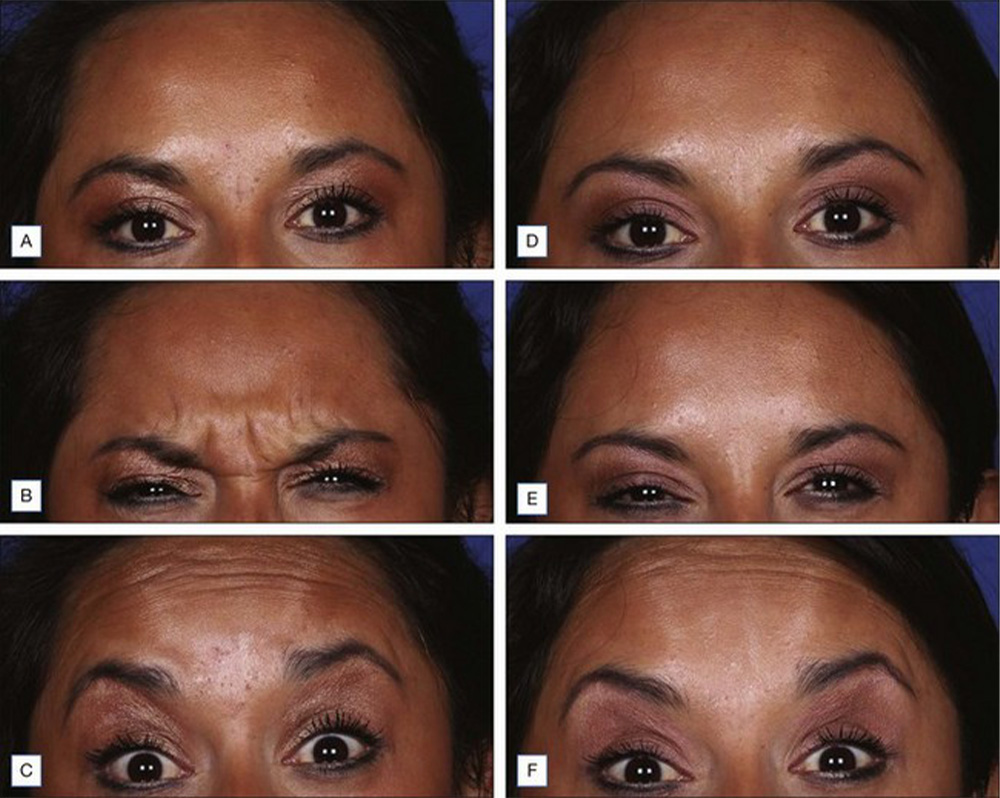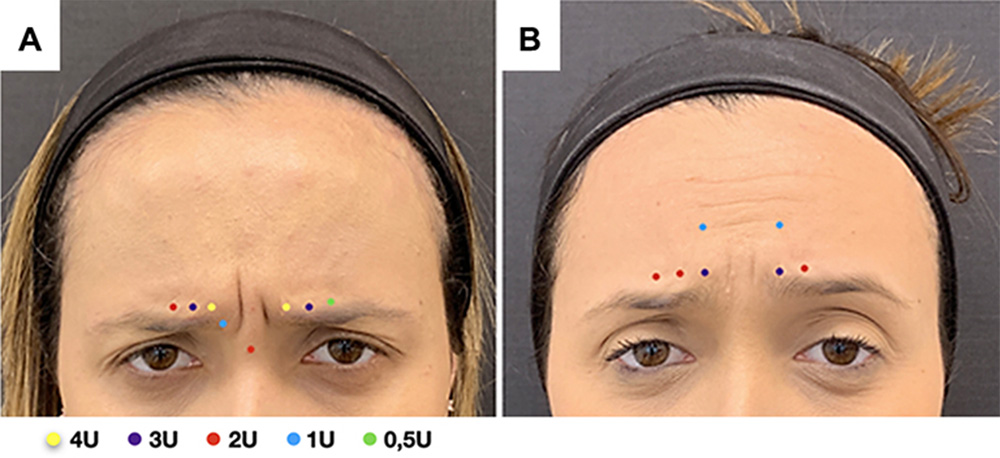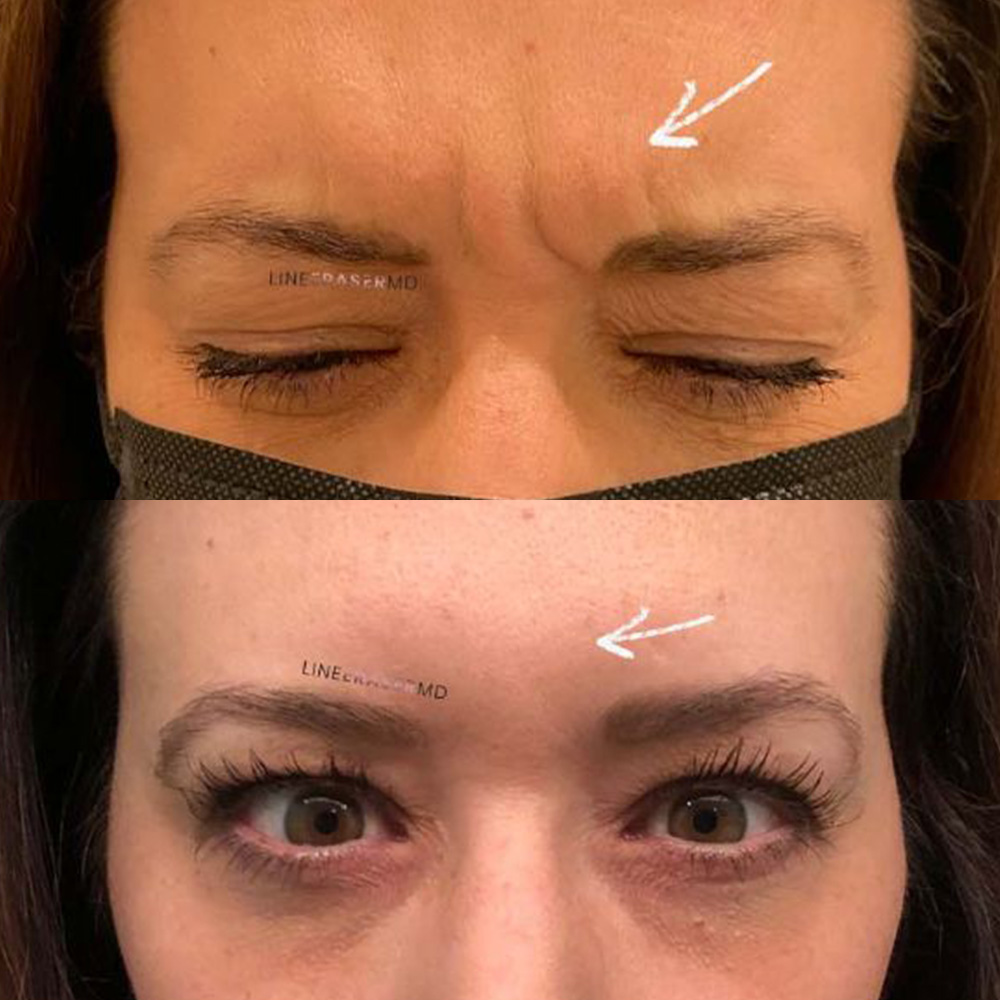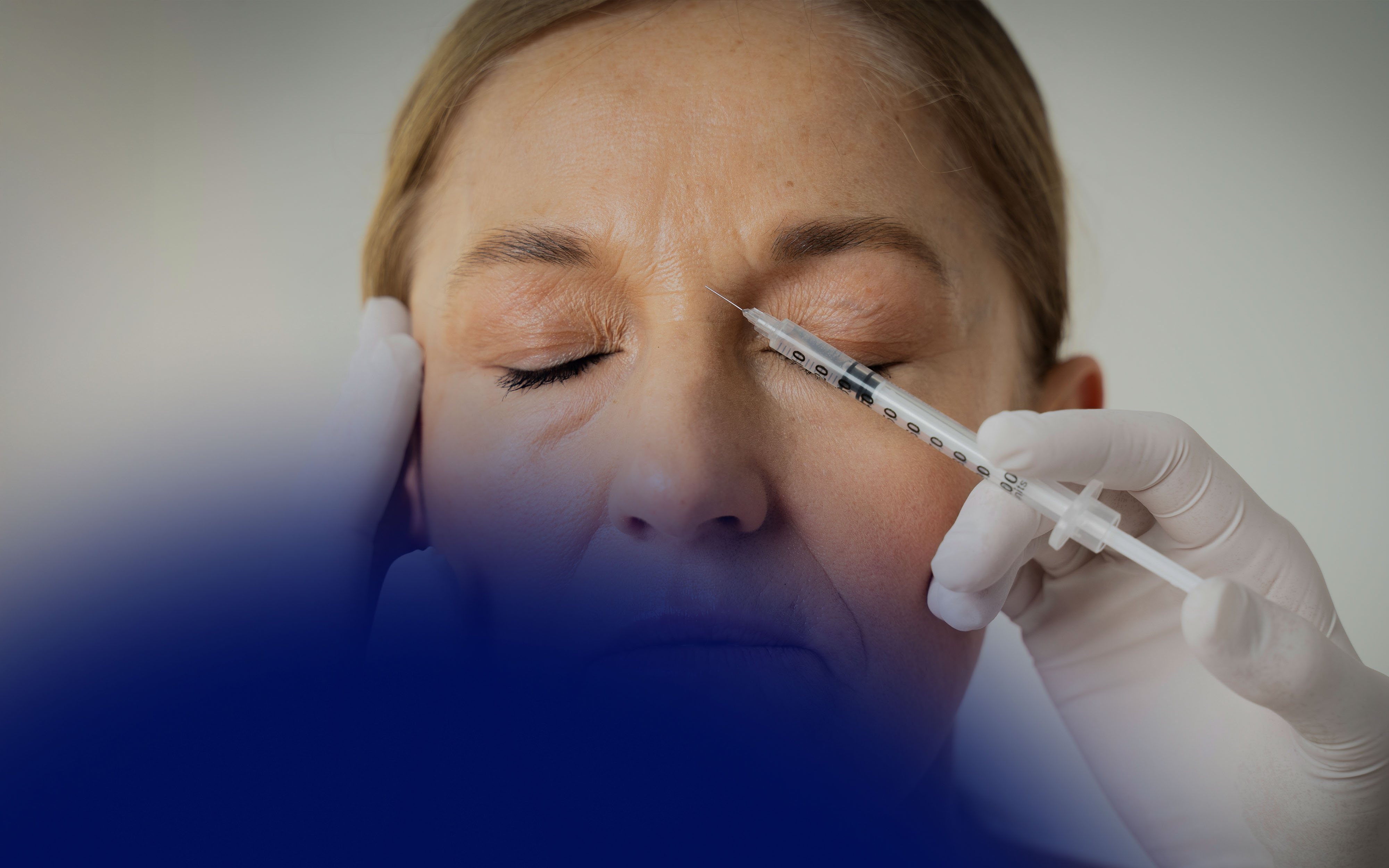
Key Takeaways
- The glabella is a high-risk but rewarding treatment area where precision and anatomy knowledge are essential.
- Demand for glabella Botox is growing as patients seek softer frown lines without losing natural expression.
- Both 3-point and 5-point injection patterns are widely used, each with distinct benefits depending on muscle strength and symmetry.
- Men often require different approaches than women due to stronger musculature and aesthetic goals.
- Patient education and aftercare are vital to prevent complications and achieve natural looking Botox treatments.
The Anatomy of the Glabella
The glabella is the area between the eyebrows and above the nose, where the corrugator supercilii, procerus, and depressor supercilii muscles converge. These muscles contract together to form vertical “11” lines and horizontal creases. Because the area lies close to key vascular structures, including branches of the supratrochlear and supraorbital arteries, accurate injection technique is critical for safety.
Understanding how these muscles overlap is the foundation of effective treatment. Over-injection can paralyze natural expression, while incorrect placement risks side effects such as brow or eyelid ptosis.

What Are Glabellar Lines?
Glabellar lines, commonly called frown lines or “11s,” develop from repetitive contraction of the glabellar muscles. Over time, collagen breakdown makes these creases more permanent, even at rest. Patients often find these lines give them an angry, tired, or stressed appearance.
Botox for glabellar lines is one of the most requested procedures in aesthetic clinics. Patients frequently bring in glabella Botox before and after photos to discuss potential results. The goal is softening the lines while preserving a natural range of expression.

Why Is Glabella Botox Treatment in Demand?
There are both aesthetic and emotional reasons driving demand. Patients want to look more approachable and refreshed, and reducing frown lines can significantly affect how others perceive them. For younger patients who want to achieve natural results for Botox frown lines, gradual approach and skilled injector are the key. Younger patients see this treatment as a preventative measure, as they are actively slowing the progression of deeper creases.
For injectors, this treatment remains a cornerstone of facial aesthetics. It is one of the first areas many practitioners learn during Botox training, but it is also one of the most technically demanding due to vascular risks and the need to avoid a “frozen look.”
How Long Does Botox in the Glabella Take to Work?
Most patients begin to notice softening of frown lines within 3 to 5 days, with full results visible at around two weeks. Educating patients about this timeline helps manage expectations and avoids premature concerns about treatment effectiveness.

How Long Does Glabella Botox Last?
On average, results last 3 to 4 months. Some patients may enjoy longer-lasting effects, while others metabolize the toxin more quickly. Encouraging consistent follow-up ensures stable results and gives injectors a chance to refine technique based on how the patient responds.
Potential Complications with Glabella Botox Treatment
The glabella carries one of the highest risks for vascular complications in the face. The most concerning complication is inadvertent intravascular injection, which can lead to skin necrosis or, in rare cases, blindness.
Other potential side effects include:
- Headache in the first few days post-treatment
- Asymmetry of brow movement
- Eyelid or brow ptosis if toxin diffuses into unintended areas
- Over-treatment, which can create a “frozen” or expressionless appearance
Preventing these complications depends on injector skill, precise technique, and thorough patient education about both common and rare glabella Botox side effects.
Typical Injection Points for Treating the Glabella with Botox
Choosing the right technique can mean the difference between soft, natural-looking results and outcomes that feel either underwhelming or overly “frozen.” Two of the most commonly used methods are the 3-point and the 5-point techniques, each with their own strengths.
The 3-Point Technique
This is the simpler of the two approaches and is often used for patients with mild to moderate frown lines. It targets the procerus muscle, located at the center of the glabella, and the two corrugator muscles on either side. By relaxing these three key muscles, you reduce the vertical “11” lines that patients are most concerned about. The 3-point method is often chosen for younger patients or those with less pronounced muscle activity, as it provides subtle softening without completely restricting movement.
The 5-Point Technique
The 5-point method builds on the 3-point approach, adding two more injections into the lateral corrugators. This creates a broader distribution of Botox, which is especially useful for patients with stronger muscle contractions or deeper glabellar lines. The additional points help ensure that both sides of the brow remain balanced and symmetrical, reducing the risk of uneven results. The 5-point technique is often considered the “gold standard” for glabella Botox because it delivers more comprehensive relaxation of the area while still allowing for controlled expression.

Choosing the Right Approach
The decision between 3-point and 5-point isn’t about one being better than the other, but about matching the technique to the patient’s anatomy and goals. For example, a younger patient in their late twenties who wants a preventative treatment may do perfectly well with the 3-point method. On the other hand, a patient with well-established static lines or very strong corrugators may need the 5-point approach to achieve visible improvement.
The glabella is a high-risk vascular zone, so staying in the correct plane, aspirating before injection, and maintaining awareness of anatomy are essential steps to reduce complications. Documenting injection points also helps with consistency in future treatments and allows adjustments based on how each patient responds
Glabella Botox in Men and Women – The Main Differences
Men typically have stronger corrugator muscles and thicker skin, which can make glabellar lines deeper and more resistant to treatment. Women, on the other hand, usually require more subtle correction to maintain a softer, natural appearance.
For male patients, preserving some movement often prevents an overly feminized or unnatural look. For female patients, a balanced approach ensures the brow position remains natural and avoids flattening the arch.
This difference in approach highlights why natural looking Botox treatments rely on individual assessment rather than one-size-fits-all techniques.
What to Expect During and After Glabella Botox Treatment
Treatment is quick, often completed in under 15 minutes. Patients may feel mild discomfort during the injections, but most tolerate it well without anesthesia. Some redness or pinpoint swelling at the injection sites is normal and resolves within a few hours.
After treatment, patients are advised to avoid lying down for four hours, strenuous exercise, and rubbing the injection sites. Directing patients to detailed Botox aftercare resources ensures they know how to support recovery and results.

How Often Should Patients Receive Glabella Botox?
For most patients, treatments every 3 to 4 months maintain consistent results. With regular sessions, some patients may notice their lines becoming less pronounced even between appointments, as the muscles adapt to reduced activity.
Encouraging patients to book follow-ups rather than waiting for full movement to return helps maintain both satisfaction and natural results.
Conclusion
Glabella Botox remains one of the most effective treatments for frown lines, but it is also one of the most technically challenging. Precision in anatomy, injection patterns, and aftercare guidance is critical to preventing complications and avoiding the dreaded “frozen look.”
For practitioners, ongoing education in online aesthetic medical training and specialized Botox training ensures safe, confident treatments. Those who’d like to learn more about how to become a Botox injector can start with mastering the glabella, one of the most fundamental but demanding areas in facial aesthetics.
FAQ
Is glabella Botox worth it?
Yes, for many patients it softens frown lines effectively, restores a more approachable appearance, and can prevent deeper creases over time.
Can glabella Botox go wrong?
Complications are possible, including ptosis or asymmetry, but skilled injectors trained in aesthetics complications training significantly reduce risks.
What are the riskiest areas for Botox?
The glabella is among the riskiest due to nearby blood vessels that, if injected improperly, can lead to serious complications.
How many units of Botox are used for glabella?
The exact dose varies per patient. Technique and muscle assessment are more important than a fixed number of units.
Does Botox in the glabella lift eyes?
In some patients, relaxing the glabellar muscles can create a subtle brow lift, making the eyes appear more open.
Sources
- Carruthers J, Carruthers A, Blitzer A, Eadie N, Brin MF. Treatment of glabellar lines with Botox (onabotulinumtoxinA): Development, insights, and impact. Medicine (Baltimore). 2023;102(S1):e32375. doi:10.1097/MD.0000000000032375 Available from: https://pmc.ncbi.nlm.nih.gov/articles/PMC10374180/
- Yi KH, Lee JH, Hu HW, Kim HJ. Anatomical Proposal for Botulinum Neurotoxin Injection for Glabellar Frown Lines. Toxins (Basel). 2022;14(4):268. Published 2022 Apr 10. doi:10.3390/toxins14040268 Available from: https://pmc.ncbi.nlm.nih.gov/articles/PMC9032255/
- Wieder JM, Moy RL. Understanding botulinum toxin. Surgical anatomy of the frown, forehead, and periocular region. Dermatol Surg. 1998;24(11):1172-1174. Available from: https://pubmed.ncbi.nlm.nih.gov/9834734/
- Brin MF, Boodhoo TI, Pogoda JM, et al. Safety and tolerability of onabotulinumtoxinA in the treatment of facial lines: a meta-analysis of individual patient data from global clinical registration studies in 1678 participants. J Am Acad Dermatol. 2009;61(6):961-70.e711. doi:10.1016/j.jaad.2009.06.040 Available from: https://pubmed.ncbi.nlm.nih.gov/19744746/
Disclaimer:
This article is intended for licensed medical professionals. All protocols, dosages, and treatment insights referenced herein are based on published literature. The content is not intended to encourage application, diagnosis, or self-treatment of unlicensed individuals, and should not be used as a substitute for the clinical judgment of a qualified healthcare provider.

